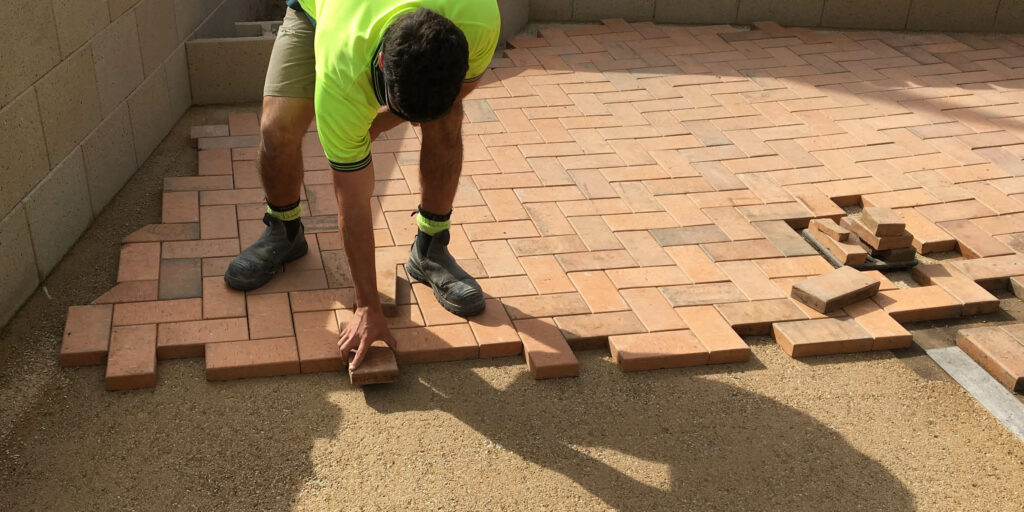Quick Tips On How To Pave

When you get the right advice, paving your own area is not that difficult. Get quick tips on how to pave below.
How To Pave: Factors to Consider
Let’s dig into all the elements involved when asking this question. Get the most succinct and straightforward tips to get you started right away.
Get The Base Ready
The most ideal base material is quarry rubble or crushed rock. Use about 75 mm for walkways and 125 – 150 mm for driveways. Allow about 30 mm of bedding sand using coarse sand or quartzite sand. But, remember, not all materials may be available in your area – so, we recommend you ask around to find out what’s best for your surface.
Don’t Forget The Drainage
In our opinion, there’s no such thing as too much drainage. Simply ensure that the base, bedding sand, and pavers slope away from buildings to ensure that water can drain away naturally into a drainage sump, channel or pit.
Make The Base Well-Compacted
Ensure that the base and the sand is compact and that there is plenty of dried sand between the compactor and the paver. Make sure also that there is a carpet liner fixed to the bottom of the compactor. Having so prevents the pavers from becoming scuffed or damaged.
Keep The Paving Level
String lines are useful in keeping your work straight, so take advantage of them when possible. Make sure you’re regularly standing back to assess your work, and that your levels are sloping the right way.
For sand bedding, the steel strap and screed method are the most effective.
The Best Way to Lay Pavers
Lay your pavers in lines. If there is a grain, lay the grain of each paver in the same direction. And cutting? Leave the cutting of the pavers as the last step of laying, so they can all be done together as a single batch. Once the pavers are down, what next? Use a commercially bagged dried sand or pave set from Adelaide Brighton Cement. Either sweep it off or it off with a vac. Just make sure you don’t overfill the joints or bevels!
Always remember to use a concrete restraint edge along the outside edge of the pavers if they do not butt up to a structure.
For more great paving information, including DIY manuals and videos, head to the APC website.

BLOGS YOU MAY ALSO BE INTERESTED IN –
Visit us at APC to pick up a free sample!
Or, send us a product enquiry or request a quote online

